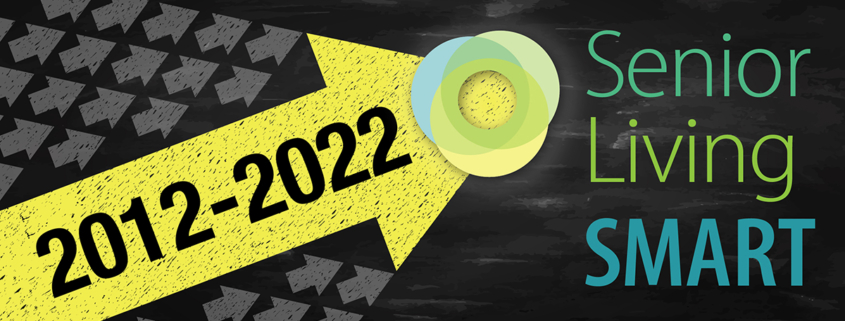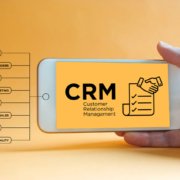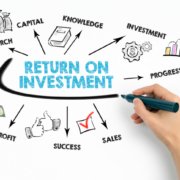10 Ways Senior Living Marketing Has Changed in 10 Years
This year marks our 10th anniversary. For many industries, a decade isn’t a long time. But in the world of marketing where technology can have a major influence on how we do things, ten years is a lot.
Don’t believe us? Check out our list below of 10 ways senior living marketing has changed since 2012.
1. The top senior living referral sources have undergone a dramatic makeover.
In 2012, the top referral sources for senior living included the Yellow Pages, signage (like billboards), and church bulletins. Today, the top referral sources are all digital—think websites, emails, online ads, and social media.
This isn’t surprising given that “everyone” is online these days. And yes, that most certainly includes older adults. The Pew Research Center says that 75% of those 65 and older report being internet users, and 61% of people over 65 own a smartphone.
Most people looking for a product or service—whether it’s a new car or a new home in a senior living community—begin their search online, visiting websites, asking for referrals on social media, and reading online reviews.
2. Senior living marketing teams have embraced inbound marketing.
The concept of inbound marketing was coined in 2005 by HubSpot, but it only started to really take off in 2012. Of course, not all industries adopted it right away. (Cough, senior living marketers, cough.)
Our industry has been notoriously slow to adopt the latest trends. But as we write this blog post in 2022, we can say—with confidence—that the industry, as a whole, now recognizes and values the importance of inbound marketing and having a strong digital presence. (Whether all communities are executing these things properly is another story!)
3. Senior living websites have become interactive experiences.
In 2012, many senior living websites simply served as virtual brochures. Not much thought was put into the buyer’s journey, like how or where they might enter the site or how to motivate them to dig deeper with calls-to-action.
Today’s senior living websites have flipped the script. (Well, the ones built right have!) Websites are now built thoughtfully—and with purpose—using carefully researched keyword phrases and optimized content. Much emphasis is placed on the layout—colors, fonts, font size—and how everything renders across various devices from smartphones to tablets to desktops.
On each website page, the visitor is encouraged to take a meaningful next step—whether that’s reading a different article, downloading a piece of relevant content, or requesting a tour. The user experience is enriched further through other elements like live chat, interactive surveys, and videos.
Bottom line: Today’s senior living websites are built to not only attract the right prospects, but to also keep them coming back thanks to engaging content that aligns with their journey.
4. Senior living sales teams have moved to CRMs.
If you’ve worked in senior living sales long enough, you might remember the days of paper files or Excel spreadsheets. Looking back now, it seems so quaint, doesn’t it?
Change did NOT come easily in this arena—we’re creatures of habit after all. But once sales teams had a chance to get comfortable with the technology, they realized what they’d been missing and how much easier a good senior living CRM could make their lives.
5. Marketing automation is no longer optional.
We’re not going to lie: The biggest challenge we’ve encountered this last decade has been getting senior living marketing and sales teams to use marketing automation. For the most part, this is no longer an issue. Most communities get that it’s impossible to successfully compete in 2022 without some form of automation.
- Progressive form fields allow today’s marketers to learn about their prospects’ hot buttons, motivations, timelines, and decision stage so that by the time a salesperson gets the lead, we know a lot about the lead.
- Lead scoring helps differentiate sales-qualified leads (SQLs) from marketing-qualified leads (MQLs). SQLs are sent to the sales team while MQLs continue to be nurtured.
The next challenge—for us—is getting marketing and sales teams to leverage ALL that their marketing automation can do. But that’s a story for another blog post.
6. The social media landscape has expanded—both in terms of platforms and users.
In 2012, Facebook was only eight, Twitter was only six, and Instagram was in its infancy. TikTok wasn’t even a twinkle in anyone’s eye. In 2012, social media was still a young person’s playground, too.
Now, in 2022, many older adults regularly use social media. In fact, the Pew Research Center says that “presence on social media among Americans 65 and older grew about fourfold since 2010” and “the gap between adults under 30 and adults 65 and older shrank from 71 points to 39 points.” And according to Statista, 82 percent of the population in the United States had a social networking profile in 2021.
The most successful senior living communities today are using platforms like YouTube and Facebook to great effect as well as other platforms like Instagram and Pinterest.
7. Traditional marketing has taken a backseat (but still has a place).
Traditional marketing methods—think direct mailers, billboards, flyers, print advertising, radio advertising, and the like—have most definitely taken a backseat to digital marketing methods across all industries.
But many of these methods still have a place in senior living marketing (for now anyway). How’s that? Well, even though we’re starting to market more to Boomers (see #10 below), communities are still attracting people from the Greatest Generation, too. And these folks love their snail mail, newspapers, and radio stations.
It will be interesting to see what happens over the next decade. Will direct mail still be a thing in any industry? What about newspapers and magazines? Only time will tell, but we suspect we’ll rely less and less on many of these so-called traditional methods.
8. The senior living sales team is no longer in control of the sales process—the buyer is.
Ten years ago, the community sales team was the “expert.” They had all the answers and resources. They were the “secret keepers,” and prospects had to talk to them or meet with them in person at the community to get all the information they needed to make an informed decision.
Now, prospects expect to get all of the information (like pricing, floor plans, brochures, and so forth) independently without speaking to a salesperson until they are ready to do so. The job of the senior living sales and marketing teams is to enable buyers to get to this point without any friction.
The good news is that by the time prospects are ready for a sales interaction, they have most of the information they need to make a decision. The bad news is that if a community doesn’t provide this information on its website, a competitor or third-party lead aggregator will have the advantage if they do offer this level of transparency.
9. Um, did someone say “pandemic”? (Do we really need to point out the obvious?)
We don’t have to remind you about what happened in 2020 and is still dragging on. The pandemic dramatically changed everyone’s lives, and it had a profound effect on every industry under the sun.
The senior living industry was no exception. The pandemic forced every community to rethink its marketing strategy and tactics. The sales cycle became much longer in most categories (only crisis-driven memory care remained exempt).
Providers that didn’t have a solid digital presence had the most trouble since most in-person sales channels (tours, lunch, events) became useless, quite literally overnight. Everyone had to reimagine the sales process and develop virtual sales experiences (for example, taking static brochures and turning them into digital flipbooks, creating virtual tours, and doing live-streamed events).
Luckily, the industry as a whole responded with aplomb, and sales teams learned that they could still sell despite a pandemic.
10. Boomers have come of age.
Today, we’re on the cusp of one of the biggest shifts. While 2012 was still all about those from the Greatest Generation and the Silent Generation, this next decade will be focused on Boomers.
And let’s just say that their wants are quite different from what their grandparents and parents wanted. Boomers demand independence, transparency, and plenty of choices. They want what they want when they want it. This means senior living communities will need to rethink what it means to have someone available 24/7/365 to field questions.
Luckily, we’re living in the age of artificial intelligence (AI) and machine learning. AI and automation have created an opportunity for prospects to engage with chatbots, surveys, quizzes, and premium content at their convenience—and we suspect this trend will continue to grow over the next decade.
BONUS: We’ve changed too!
In our earliest iteration in 2012, we served as a resource hub for all the various departments within a senior living community. But we quickly realized, based on our founders’ experience, that marketing and sales were our specialties.
Over the last decade, we’ve grown into the virtual marketing agency we are today—one that’s powered by our industry expertise, our team’s passion, and our supportive partners like HubSpot (we’re a Platinum Solutions Partner). Learn more about us. Or better yet—let’s chat!












